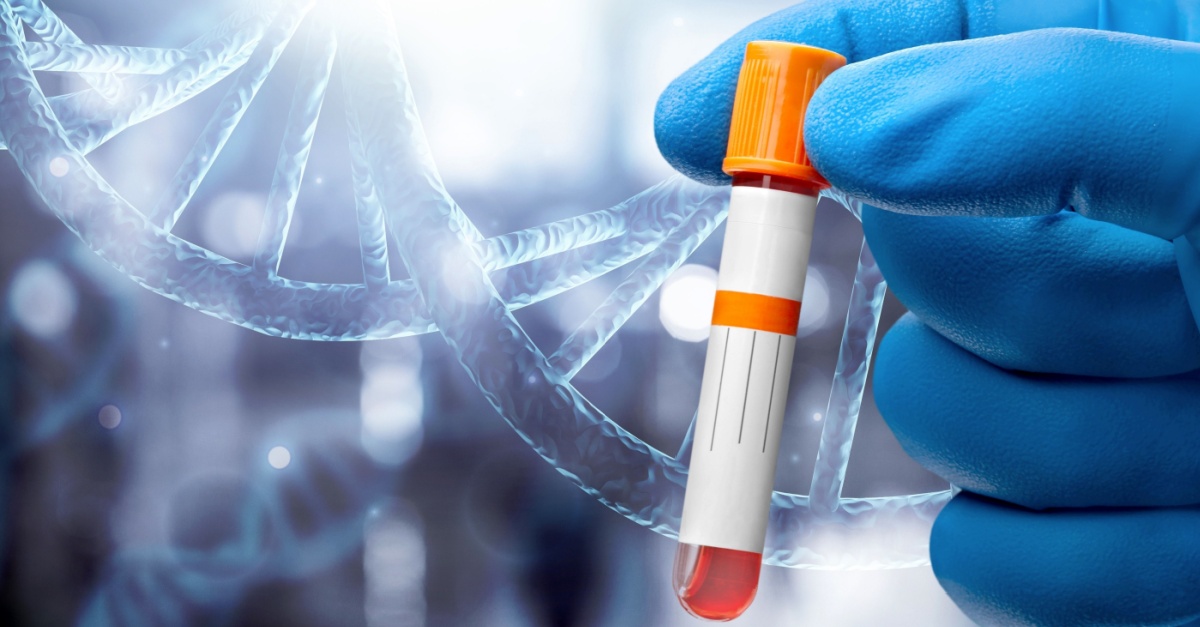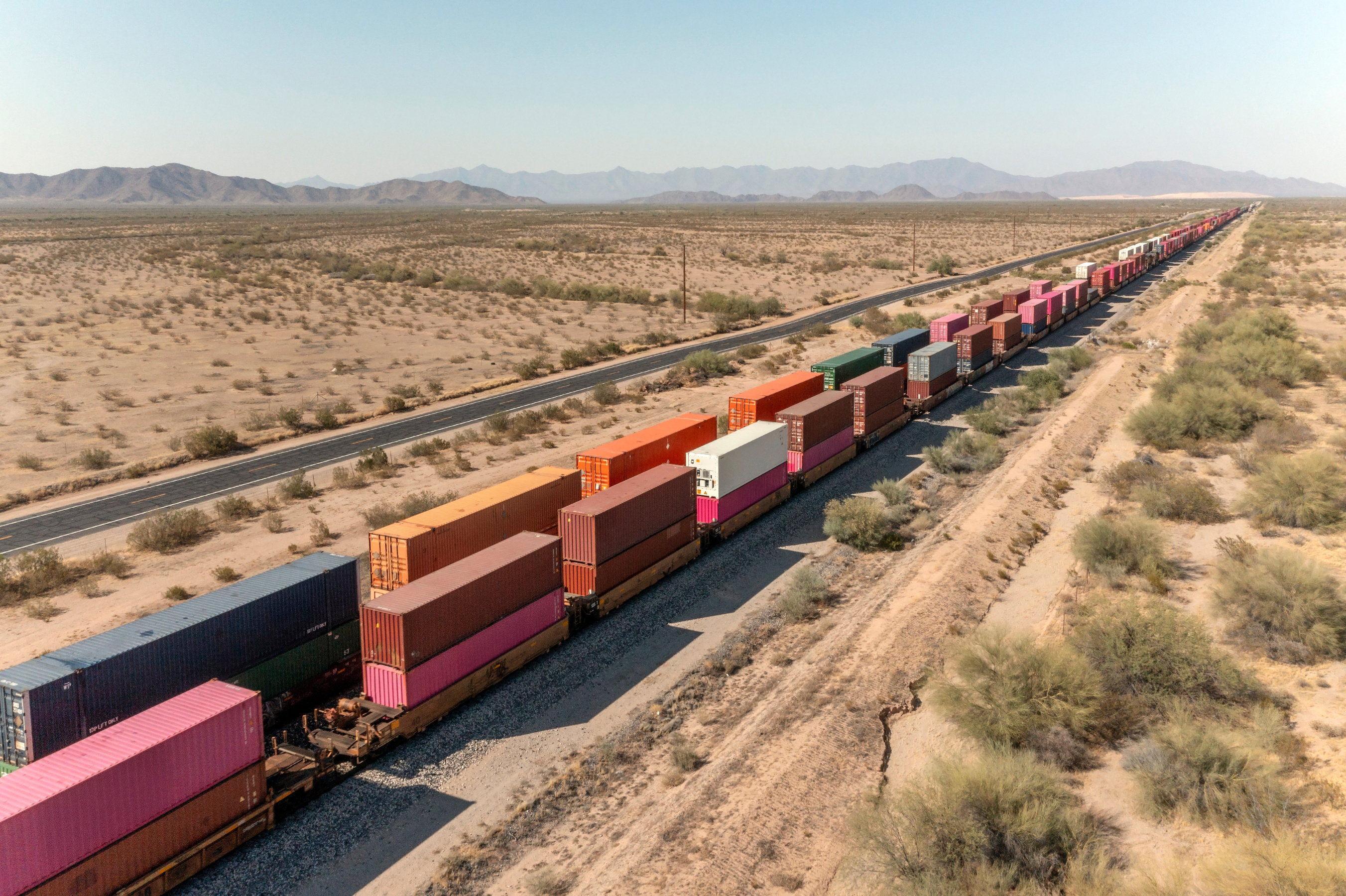Wochenrückblick: Da täglich Fracht im Wert von 18 Millionen US-Dollar verschwindet, packt jemand Medikamente auf ein Segelboot

October 16, 2025
October 24, 2025
x min. Lesedauer

Jeden Tag verschwinden schätzungsweise 18 Millionen Dollar an Fracht (einschließlich Guy Fieris Tequila), und die meisten Trucker tun das als Geschäftskosten ab. Das ist der Zustand der Lieferkette im Jahr 2025: Manche Dinge verschwinden, manche Dinge entwickeln sich in verrückte Richtungen. Wie Takeda, der für eine zweiwöchige Atlantiküberquerung Blutmedikamente auf ein Rennsegelboot lädt, oder Bristol Myers, das 1,5 Milliarden Dollar für Zelltherapien fallen lässt, die das Labor komplett überspringen. Die UN bittet Sie auch um Ihre Meinung zu den 30 bis 50 Milliarden Dollar Lebensmittelbetrug Problem. Und während Daniel Gribbin von Deloitte Giganten aus dem Nahen Osten hilft, KI zu nutzen CO2-Emissionen reduzieren, eine Wahrheit wird klar: Das Zeug, das sich gerade auf dem Planeten bewegt, ähnelt kaum dem, was es vor fünf Jahren bewegt hat.
18 Millionen Dollar verschwinden täglich durch Frachtdiebstahl: Viele zucken nur mit den Achseln
Guy Fieris millionenschwerer Tequila-Überfall sorgte im vergangenen November für Schlagzeilen, aber Trucker hoben kaum eine Augenbraue: Sie sehen Fracht im Wert von 18 Millionen Dollar verschwindet jeden einzelnen Tag, und an diesem Punkt Ladungsdiebstahl fühlt sich ungefähr so überraschend an, als würde man auf der I-95 in den Verkehr geraten. Das American Transportation Research Institute ließ die Einnahmen fallen: 6,6 Milliarden Dollar gingen jährlich verloren, wobei die Fluggesellschaften jährlich rund 520.000 Dollar verloren und die Logistikdienstleister 1,84 Millionen Dollar verloren.
Der große Überfall auf die Lebensmittelkette
Diebe lieben es mehr als alles andere, Essen zu stehlen, weil man einen Hamburger nicht genau verfolgen kann, wenn ihn jemand gegessen hat. Elektronik und Autoteile runden die Favoriten ab, aber Lebensmittel beherrschen die Welt der Diebstähle aus zwei sehr guten Gründen: schneller Verkauf und keine Beweise. Kalifornien führt den Amoklauf an, gefolgt von Illinois und Texas. Diebe haben es auf alles abgesehen, von Lkw-Haltestellen bis hin zu den eigenen Terminals der Spediteure. Doch der tatsächliche Diebstahl erzählt nur einen Teil der Geschichte. Rechnet man die Ausfallzeiten, das Gerangel um den Ersatz gestohlener Lkw und all die anderen Nuancen hinzu, kostet die gestohlene Ladung die Spediteure das Drei- bis Sechsfache ihres ursprünglichen Werts.
Warum sollten Sie sich die Mühe machen, diesen Polizeibericht einzureichen?
Die Fluggesellschaften haben die Erholungsraten nachgerechnet und sind zu dem Schluss gekommen, dass Hoffnung teuer ist — wie Der Frachtdiebstahl zeigt keine Anzeichen einer Verlangsamung. Nur 2% der gestohlenen Ladungen schaffen es jemals unversehrt zurück, während 74% für immer im Nichts des Diebstahls verschwinden. Die Erfolgsquote wurde so erbärmlich, dass 9% der Fluggesellschaften ganz aufhörten, die Polizei zu rufen. Schließlich kommt es jährlich zu einem Diebstahl pro 76 Lkw, sodass das Verschwinden der Ladung zu diesem Zeitpunkt praktisch zu einem planmäßigen Wartungsobjekt wird.
Einblick in Takedas Pläne, Blutmedikamente auf einem Segelboot nach Übersee zu versenden
Das Pharma-Schwergewicht Takeda wird gekühlte Medikamente gegen Blutkrankheiten auf ein windgetriebener Trimaran im Herbst 2026 um zu testen, ob sie eine zweiwöchige Atlantiküberquerung überleben können. Das Startup Vela hat dieses Ding so gebaut, dass es wie ein Ozeanrennfahrer aussieht, und Takeda setzt darauf, dass es von Frankreich nach NYC geht Pharma-Sendungen darüber, ob Segelboote sowohl träge Containerschiffe als auch Geldbeutel zerquetschende Luftfracht besiegen können.
Der 5% -Testlauf, der den Versand verändern könnte
Xavier Baville, der Logistikchef von Takeda, will im Jahr 2026 5% der Mengen von Frankreich nach New York auf Velas gekühltem Trimaran transportieren. Der Haken ist jedoch, dass diese Lieferungen nachweisen müssen, dass das Schiff die Standards der Guten Vertriebspraxis erfüllt und Takeda gleichzeitig seinem Netto-Null-Ziel für 2040 nähert. Im Moment buchen sie ganze 40-Fuß-Container für weniger als sechs Paletten, was keinen Sinn ergibt. Das Medizintechnikunternehmen Echosens hat bereits 100% seines Volumens im vierten Quartal 2026 für Vela bereitgestellt, während die Modemarke SMCP und der Winzer Arvitis sich die erste Reise teilen werden.
Geschwindigkeit trifft Solar auf einem 171-Fuß-Mast
Velas Trimaran landet nächsten Sommer von philippinischen Schiffbauern und ist mit 2.600 Quadratfuß Sonnenkollektoren, zwei Hydrogeneratoren und zwei 171-Fuß-Rennmasten ausgestattet, die 14 Knoten (16 mph) erreichen. Bis 2028 werden vier weitere Trimarane zur Flotte hinzukommen, sodass wöchentliche Fahrten zwischen Frankreich und den USA durchgeführt werden, bei denen jährlich 48.000 Tonnen für Pharmazeutika, medizinische Geräte, Luxusgüter und Industrieteile transportiert werden. Ganz zu schweigen davon, dass Vela-Mitbegründer Michael Fernandez-Ferri besonders optimistisch ist, wenn es darum geht, Hafenstaus zu umgehen, indem kleinere Häfen genutzt werden, in die ihre Schiffe leicht einfahren können.
Bristol Myers gibt 1,5 Milliarden US-Dollar aus, um an der neuesten Zelltherapie-Goldrausch von Big Pharma teilzunehmen
Bristol Myers Squibb nur hat einen Scheck über 1,5 Milliarden Dollar ausgestellt um die heißeste Party der Pharmaindustrie zu crashen: Zelltherapien Sie können Patienten ohne die traditionelle Laborgymnastik direkt injizieren. Der Schachzug von Bristol Myers bestand darin, sich Orbital Therapeutics und dessen Leitprogramm OTX-201 zu schnappen, das 2026 mit Studien am Menschen beginnen könnte.
Überspringen Sie das Labor, reparieren Sie das Immunsystem vor Ort
Traditionelle Zelltherapien zwingen die Patienten durch einen anstrengenden Prozess: Ärzte extrahieren Zellen, schicken sie in ein Labor, Wissenschaftler tüfteln wochenlang an ihnen und schicken sie dann zusammen mit einer harten Chemotherapie zur Reinfusion zurück. Bristol verkauft bereits mehrere zugelassene Versionen gegen Blutkrebs. Die Behandlung von Autoimmunerkrankungen wie Lupus erfordert jedoch etwas Sanfteres. Der Ansatz von Orbital funktioniert wie ein Software-Update statt wie ein Hardware-Ersatz. Dabei werden Zellen mithilfe von zirkulärer RNA trainiert, CD19-Proteine auf bösartigen B-Zellen genau dort aufzuspüren, wo sie leben. Das 270-Millionen-Dollar-Startup, das 2022 vom ehemaligen CEO von Alnylam, John Maraganore, gegründet wurde, zeigte in präklinischen Studien, dass seine Technologie B-Zellen in Blut, Milz und Lymphknoten auslöschen kann. Dieser Schritt ist also ein natürlicher nächster Schritt.
Spät zur Party, aber Bristol sorgt für Glaubwürdigkeit
Gilead, AbbVie und AstraZeneca haben in diesem Jahr bereits auf In-vivo-Zelltherapie-Unternehmen gesetzt, sodass Bristol aufholen musste. Doch Bristol bringt ernsthafte Glaubwürdigkeit mit sich: Es gibt mehrere zugelassene Blutkrebszelltherapien, darunter Breyanzi, das auf dasselbe CD19-Protein abzielt. Die Nachfrage ist sicherlich da, insbesondere bei Autoimmunerkrankungen, für die keine vollständige Chemotherapie erforderlich ist, um sie auf die Werkseinstellungen zurückzusetzen.
Die UN will Ihre Meinung zum Lebensmittelbetrug
Das Büro des Hohen Kommissars der Vereinten Nationen für Menschenrechte hat Fragen zu gefälschten Lebensmitteln und sie wollen Antworten von dir. Eine Arbeitsgruppe arbeitet derzeit an einem Bericht für die Sitzung des Menschenrechtsrates im Juni 2026, in dem untersucht wird, wie Lebensmittelbetrug und Sicherheitsfragen mit grundlegenden Menschenrechten kollidieren. Das ultimative Ziel besteht darin, herauszufinden, welche Fortschritte bei der Schaffung von Lebensmittelsystemen erzielt wurden, die die Verbraucher nicht täuschen und gleichzeitig die Menschen angemessen ernähren.
Das 30-Milliarden-Dollar-Problem, das unter dem Radar fliegt
Laut einem Bericht der Welthandelsorganisation von 2024 kostet Lebensmittelbetrug jährlich zwischen 30 und 50 Milliarden US-Dollar. Denken Sie an gefälschte Zutaten, irreführende Etiketten, betrügerische Verpackungen, Saatgutdiebstahl und geschmuggelte landwirtschaftliche Produkte, die den Geldbeutel belasten und Gesundheitsrisiken bergen. Das OHCHR möchte verstehen, wie diese irreführenden Praktiken den Zugang zu Grundrechten wie Leben, Gesundheit und sicheren Lebensmitteln blockieren und welche Rolle Agrar- und Konsumgüterunternehmen dabei spielen, das Problem entweder zu lösen oder zu verschärfen.
Ihre Chance, sich einzubringen
Die Arbeitsgruppe stellte potenziellen Befragten mehr als 20 Fragen. Sie wollen wissen, wie Länder bessere Gesetze schaffen können, die Unternehmen zur Rechenschaft ziehen, und welche Mechanismen zur Betrugsbekämpfung existieren sollten bevor es auf den Tellern ankommtund ob aktuelle Handelsabkommen den Bemühungen zur Betrugsbekämpfung helfen oder schaden. Sie können Fälle von Menschenrechtsverletzungen im Zusammenhang mit Unternehmen, Einblicke in die Verantwortung von Investoren oder Ideen zur Rückverfolgbarkeit und korrekten Kennzeichnung austauschen. Senden Sie Antworten (maximal 2.500 Wörter, auf Englisch, Französisch oder Spanisch) bis zum 1. Dezember an hrc-wg-business@un.org. Beiträge werden veröffentlicht, sofern Sie nichts anderes beantragen.
Daniel Gribbin von Deloitte sorgt dafür, dass Lieferketten für den Planeten funktionieren
Daniel Gribbin sieht, was die meisten Führungskräfte übersehen: Lieferketten erzeugen mehr Kohlenstoff als Fabriken, Büros und Flotten zusammen. Der Nachhaltigkeitsdirektor von Deloitte für den Nahen Osten hilft Unternehmen bei der Nachverfolgung Emissionen im Bereich 1—3 und das Netto-Null-Ziel der VAE für 2050 in die Realität umzusetzen — damit er ein oder zwei Dinge darüber weiß Lieferketten zu einem Teil der Lösung machen statt des Problems.
Wenn Roboter reparieren, was Menschen kaputt gemacht haben
Gribbins Crew ernährt sich maschinelles Lernen für Stahl-, Zement- und Ölunternehmen, damit ihre Lieferketten nicht mehr so viel Kohlenstoff ausstoßen. Die KI erkennt Geräteprobleme, bevor sie auftreten, und optimiert den Betrieb im Handumdrehen. Blockchain sorgt dafür, dass alle ehrlich sind, was ihre Kohlenstoffzahlen angeht, während digitale Zwillinge es Unternehmen ermöglichen, erneuerbare Energien zu testen, ohne die Farm zu gefährden. Tatsächlich erreichte Deloitte mit genau diesen Methoden sein eigenes Netto-Null-Ziel bis 2040.
Die Wasserstoffwirtschaft nimmt Gestalt an
Die VAE planen, bis 2031 ein globales Wasserstoffzentrum zu werden, und Gribbin hilft dabei, das Rückgrat dafür zu schaffen. Sein Team entwirft die Infrastruktur, verbindet die Wirtschaftlichkeit von Wasserstoff mit der wirtschaftlichen Rentabilität und baut grenzüberschreitende Partnerschaften auf, die über Pilotprojekte hinaus zum tatsächlichen Einsatz reichen. Sie schaffen ESG-Rahmenbedingungen, denen internationale Anleger beim Aufbau vertrauen Modelle der Kreislaufwirtschaft die vor Ort funktionieren — eine große Sache, wenn man bedenkt, dass Lieferketten heutzutage grüne Finanzierungen anziehen und die Marktposition bestimmen.
Verfolge, was sich bewegt. Schützen Sie, was wichtig ist.
Segelboote mit Blutmedikamenten. Zelltherapien, die das Labor überspringen. KI senkt die CO2-Emissionen. Die Lieferkette entwickelt sich ständig weiter, aber all diese Innovationen bedeuten nichts, wenn Sie den Überblick darüber verlieren, was Sie versenden. Tracking in Echtzeit und Sichtbarkeit der Lieferung in Echtzeit kann Ihnen helfen, sich vom täglichen 18-Millionen-Dollar-Diebstahlclub fernzuhalten — und noch mehr. Machen Sie also den nächsten Schritt.
Bewaffnen Sie sich mit Innovation: lassen Sie Tve Nehmen Sie eine Vorreiterrolle bei der Transformation Ihrer Lieferkettenabläufe ein. Machen Sie sich mit der Zukunft der Logistik vertraut —fange noch heute mit Tve an.


